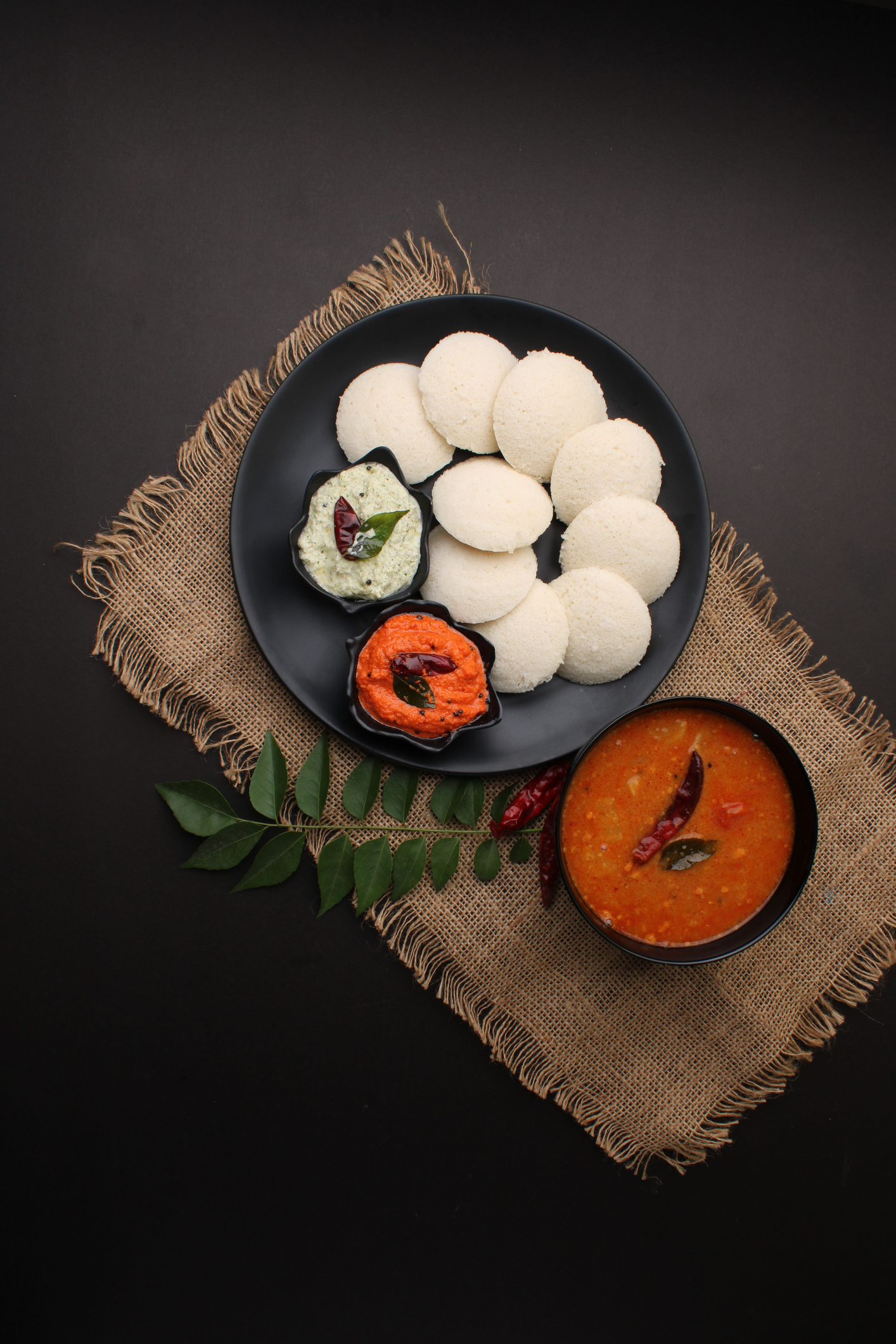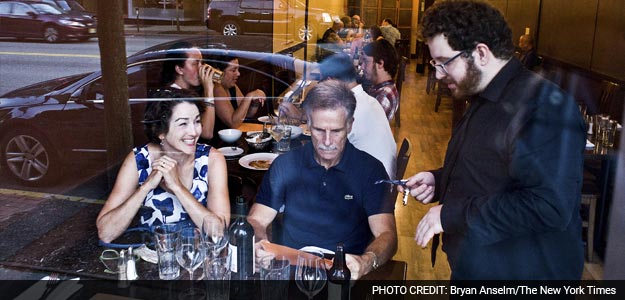How often have you bought something you felt was not worth the money?What if you could set the price?What factors would influence your number?
For years, behavioral scientists have studied such questions.They often look at a model called PWYW (Pay what you want, that is.) The idea may seem like a consumer’s giddiest fantasy. But a real-life extreme version of the experiment unfolding at a restaurant in Montclair, New Jersey, is affirming the researchers’ predictions. It has been prompting a panoply of reactions - including anxiety, delight, incredulity, guilt and, yes, rampant opportunism. Zod Arifai, a local chef, is offering customers a menu with no prices for the month of August, encouraging them to order as many dishes as they would like at his two side-by-side restaurants.When diners signal for the check, servers ask, “How much would you like to pay?” With no price guidelines - such as a museum’s “suggested donation” - the offer compels diners to gaze inward and develop ad hoc criteria, to look a fresh-faced server in the eye and announce the meal’s value.Ayelet Gneezy, an associate professor of behavioral sciences and marketing at the University of California, San Diego, who has studied the model, said it could set off psychological conflict: People like to see themselves as “fair” and even generous, but also want others to see them as “prudent and not a sucker.”“I know I’m going to overpay,” Morgan Torres said the other night as he perused the menu. “I don’t want them to think of me as 'that cheap guy at Table 5.'” At the next table, Sid Dvorkin was having no such crisis of conscience. He would simply base his amount on what he had paid before. “The concept of overpaying is not something I gravitate toward,” he said.Given the PWYW opportunity, consumers easily rationalize their decision, Gneezy said. Barbara Rowe and Richard Katz made up their own rationale: palate power. They paid $12 for each of five dishes they loved, and $8 for one they did not.A decade ago when Arifai, 52, opened his first restaurant, Blu, in Montclair, a diverse suburb of New York City, The New York Times rated it “excellent.” Then he opened the more casual and also warmly praised Next Door, next door. Blu’s skate with cauliflower, wild mushrooms and truffle broth used to be $26; Next Door’s meatloaf with chipotle glaze on soft polenta was $14.Now, with his lease ending, Arifai has decided to move on, and eventually open a restaurant in Manhattan. A former rock guitarist with ungovernable hair, Arifai wanted to thank the community with a month of pay-what-you-want dining - despite the entreaties of family and friends who pronounced the concept “insane.”In the spirit of equality, he is serving the same menu at both restaurants. But at the upscale Blu, with its sleek stemware and soft sconce lighting, diners are paying about $3 more per dish than those at Next Door, with its bright, basic décor. (Alcohol is not included; the restaurants are BYOB.)Overall, Arifai said, diners seem to be paying slightly less than half the old menu prices, though a direct comparison is difficult because the portions are somewhat smaller.“The majority of people want to take advantage of the offer, but also recognize that it feels weird,” said Kathleen D. Vohs, a professor of marketing at the University of Minnesota who writes about the psychology of money. “So they limit what they order, do a good job of valuing it, and then walk back from what it’s worth.”At least once a night, the staff gets a bad taste - such as from the “young, smug” table of five that ordered 25 dishes, paid $15 and left a $5 tip. Indeed, at one end of the bell curve, customers will have an “economically rational” attitude, Vohs said: “'I’ll take everything I can and leave no money, because the restaurant’s letting me do it.'” One family ordered eight dishes and sneaked out, leaving a handful of dollar bills.“My daughter told me, 'You gave people the option,'” Arifai said. “Maybe they’re poor and a night out means eating at McDonald’s. So that’s what they left. But you gave them a good meal.'” But another family left a thank-you note with their modest amount: “The food and service was worth way more than we were able to leave.” It continued, “As a kid in college and a mother doing inconsistent freelance, without the deal we wouldn’t have gotten the chance to come.”Vohs said that what might compensate for those who underpay are the angst-ridden outliers squirming at the other end of the bell curve “who feel they have to make up for what they see as others’ misdeeds.” The other night Lesley Jarbe was in a swivet as she anticipated that post-dessert moment of truth. She’d heard stories about the shortchangers.“I want to show the chef that I love his food and I appreciate what he’s doing,” she said. “And I worry about the kitchen staff! The waiters! I’m so anxious!”Then there was the customer who somehow covered both ends of the bell curve: He took advantage of Arifai’s generosity, even as he expressed concern about the server’s pending unemployment. The solution? He left $5 for the food and a $50 tip. Profit aside - and it certainly will be - Arifai considers the endeavor a success.“I’ve learned that humanity is not as bad as we think,” he said. Yes, 20 percent are paying less than a dollar a dish. “But 80 percent are not.”The other night as Andrew Manno, a waiter, was collecting money from a couple, their 6-year-old daughter asked, “Aren’t we supposed to pay what we want for our food?”Yes, Manno replied.“I want to pay for my ice cream,” the child said. Then she reached in her bag and handed him a candy bar.© 2015 New York Times News Service
For years, behavioral scientists have studied such questions.They often look at a model called PWYW (Pay what you want, that is.) The idea may seem like a consumer’s giddiest fantasy. But a real-life extreme version of the experiment unfolding at a restaurant in Montclair, New Jersey, is affirming the researchers’ predictions. It has been prompting a panoply of reactions - including anxiety, delight, incredulity, guilt and, yes, rampant opportunism. Zod Arifai, a local chef, is offering customers a menu with no prices for the month of August, encouraging them to order as many dishes as they would like at his two side-by-side restaurants.When diners signal for the check, servers ask, “How much would you like to pay?” With no price guidelines - such as a museum’s “suggested donation” - the offer compels diners to gaze inward and develop ad hoc criteria, to look a fresh-faced server in the eye and announce the meal’s value.Ayelet Gneezy, an associate professor of behavioral sciences and marketing at the University of California, San Diego, who has studied the model, said it could set off psychological conflict: People like to see themselves as “fair” and even generous, but also want others to see them as “prudent and not a sucker.”“I know I’m going to overpay,” Morgan Torres said the other night as he perused the menu. “I don’t want them to think of me as 'that cheap guy at Table 5.'” At the next table, Sid Dvorkin was having no such crisis of conscience. He would simply base his amount on what he had paid before. “The concept of overpaying is not something I gravitate toward,” he said.Given the PWYW opportunity, consumers easily rationalize their decision, Gneezy said. Barbara Rowe and Richard Katz made up their own rationale: palate power. They paid $12 for each of five dishes they loved, and $8 for one they did not.A decade ago when Arifai, 52, opened his first restaurant, Blu, in Montclair, a diverse suburb of New York City, The New York Times rated it “excellent.” Then he opened the more casual and also warmly praised Next Door, next door. Blu’s skate with cauliflower, wild mushrooms and truffle broth used to be $26; Next Door’s meatloaf with chipotle glaze on soft polenta was $14.Now, with his lease ending, Arifai has decided to move on, and eventually open a restaurant in Manhattan. A former rock guitarist with ungovernable hair, Arifai wanted to thank the community with a month of pay-what-you-want dining - despite the entreaties of family and friends who pronounced the concept “insane.”In the spirit of equality, he is serving the same menu at both restaurants. But at the upscale Blu, with its sleek stemware and soft sconce lighting, diners are paying about $3 more per dish than those at Next Door, with its bright, basic décor. (Alcohol is not included; the restaurants are BYOB.)Overall, Arifai said, diners seem to be paying slightly less than half the old menu prices, though a direct comparison is difficult because the portions are somewhat smaller.“The majority of people want to take advantage of the offer, but also recognize that it feels weird,” said Kathleen D. Vohs, a professor of marketing at the University of Minnesota who writes about the psychology of money. “So they limit what they order, do a good job of valuing it, and then walk back from what it’s worth.”At least once a night, the staff gets a bad taste - such as from the “young, smug” table of five that ordered 25 dishes, paid $15 and left a $5 tip. Indeed, at one end of the bell curve, customers will have an “economically rational” attitude, Vohs said: “'I’ll take everything I can and leave no money, because the restaurant’s letting me do it.'” One family ordered eight dishes and sneaked out, leaving a handful of dollar bills.“My daughter told me, 'You gave people the option,'” Arifai said. “Maybe they’re poor and a night out means eating at McDonald’s. So that’s what they left. But you gave them a good meal.'” But another family left a thank-you note with their modest amount: “The food and service was worth way more than we were able to leave.” It continued, “As a kid in college and a mother doing inconsistent freelance, without the deal we wouldn’t have gotten the chance to come.”Vohs said that what might compensate for those who underpay are the angst-ridden outliers squirming at the other end of the bell curve “who feel they have to make up for what they see as others’ misdeeds.” The other night Lesley Jarbe was in a swivet as she anticipated that post-dessert moment of truth. She’d heard stories about the shortchangers.“I want to show the chef that I love his food and I appreciate what he’s doing,” she said. “And I worry about the kitchen staff! The waiters! I’m so anxious!”Then there was the customer who somehow covered both ends of the bell curve: He took advantage of Arifai’s generosity, even as he expressed concern about the server’s pending unemployment. The solution? He left $5 for the food and a $50 tip. Profit aside - and it certainly will be - Arifai considers the endeavor a success.“I’ve learned that humanity is not as bad as we think,” he said. Yes, 20 percent are paying less than a dollar a dish. “But 80 percent are not.”The other night as Andrew Manno, a waiter, was collecting money from a couple, their 6-year-old daughter asked, “Aren’t we supposed to pay what we want for our food?”Yes, Manno replied.“I want to pay for my ice cream,” the child said. Then she reached in her bag and handed him a candy bar.© 2015 New York Times News Service
Advertisement
For the latest food news, health tips and recipes, like us on Facebook or follow us on Twitter and YouTube.
Tags:





